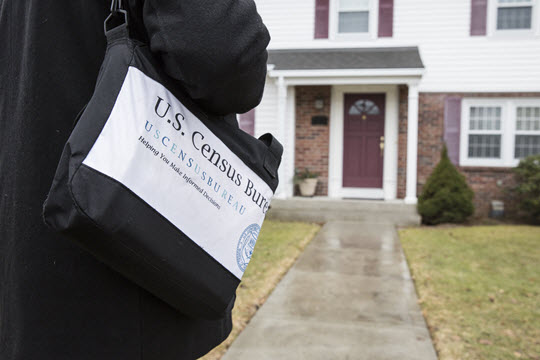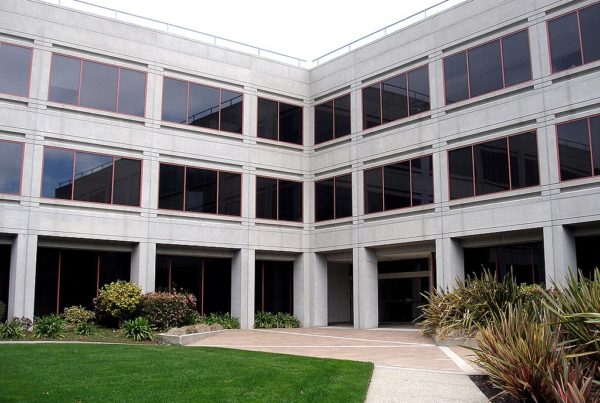A new survey by the U.S. Census Bureau shows that Texas may have hit a long-anticipated demographic benchmark: The state now has more Hispanic residents than white residents.
According to the American Community Survey, 40.2% of Texans are Hispanic, compared with 39.4% who are white. Texas hasn’t been a majority white state since 2004.
Lloyd Potter, Texas’ state demographer and a professor at the University of Texas at San Antonio’s Institute for Demographic and Socioeconomic Research, joined the Texas Standard to share more about the latest census survey results.
This transcript has been edited lightly for clarity:
Texas Standard: Were you expecting this development in this American Community Survey, or did this come as a surprise?
Lloyd Potter: Yeah, it didn’t come as a surprise. Our population projections, which we produce by race and ethnicity, suggested that this was happening during 2022, and so it really doesn’t come as a surprise. So it’s really the first — this release of the American Community Survey data yesterday — official release from the Census Bureau that indicates that this shift has occurred within Texas.
When we’re talking about racial and ethnic identity, you know, that’s that’s not a binary thing. It’s very personal. There’s lots of different permutations depending on the person. So I guess I wonder, to what extent is this data reliable?
Well, I think there probably are a number of things. So certainly race and ethnicity is a social construct, and the way the Census Bureau determines somebody’s race and ethnicity is by asking people what their race and ethnicity are. And so that’s something that is not a static thing for some people. So for example, if you asked somebody 10 years ago what their race and ethnicity was, they may or may not respond the same way today.
The way, though, that the Census Bureau asks questions about ethnicity, they separate Hispanic out from the race question. So they have a separate question that asks about whether or not somebody identifies as being Hispanic. Then they’ll also complete questions about their race, so about whether or not they identify as white, if they identify as Black or African-American, Asian, Native American, Alaska Native and so on. And respondents can respond to those race questions by selecting more than one race. But if somebody selects that they identify as Hispanic, then they’re classified as Hispanic, regardless of what race they might identify.
One of the things that we’ve also seen is increasing likelihood of people to select two or more races, and that’s a factor when we look at the white category, because in fact, between 2010 and 2020, we saw in Texas a decline in the proportion of people that identify as white, but pretty dramatic increase in the proportion of the population that identified as two or more races. So that could be a factor in doing this comparison between Hispanic and white and actually the other race groups as well, and that, then, would mean those groups may not be growing or might actually be declining. The single-race groups might actually be declining because we’re seeing a shift to two or more.
This is a trend that has been going on for quite some time, but did you see any fluctuations in the rate of change over that time?
Yeah, I mean, certainly we have seen that if you look at what we refer to as the “components of population change” — which are births, deaths and migration — the Hispanic population has historically had high rates of fertility, meaning they’re adding a lot more births. The Hispanic population is a young population, meaning they have fewer people at the older ages to die. So their rate of natural increase — births minus deaths— has been higher, certainly higher than the non-Hispanic white population, which has really low fertility rates and also has the baby boom.
So those baby boom populations are aging into the high mortality years. So natural increases really slow and may even at some point become negative for the non-Hispanic white population. And then we have migration. So we certainly have a net inflow of domestic migrants into Texas, and a significant proportion of them are Hispanic.
How long before Hispanic Texans make up a majority of the population, not just a plurality?
Well, that is the question people have been asking. Our projections go out to 2060, and that doesn’t happen in our current set of projections by 2060. My sense is that probably we’ll get there by 2070.
Now, that said, we’ve also seen declining fertility rates among the Hispanic population, where they’re potentially not quite, but beginning to, approach parity with other racial ethnic groups. And so the slowdown of the Hispanic fertility might result in that taking a little bit longer — that, kind of, reaching that point where the Hispanic population is half of our Texas population. But, certainly, the trend suggests that we will get there eventually but, again, there’s a fair amount of time and a lot can happen between now and when that may happen.
Is there anything else from the American Community Survey that you think is noteworthy for Texas that you have your eye on?
I mean, certainly this is a newsworthy item — the shift that we’ve seen and this shift between the Hispanic and the non-Hispanic white population. But this release is really the first estimates for 2021, which is really the first year that we have these data that have been impacted by the pandemic.
And so I think some of the more interesting things about it are: One is they they look at commuting patterns, and so we see a dramatic shift in the proportion of the workforce that’s commuting, meaning a much smaller proportion of the workforce is commuting and a much higher proportion that have been working from home. I guess that comes as no surprise, but now we actually have estimates of the magnitude of that. Now that infection rates are down, and so on, I think you’re going to see that a lot of workplaces will continue to have either remote work or hybrid kinds of working conditions, which wasn’t really the case at all before the pandemic occurred, or it was really pretty limited.
And then there are also some indicators about, you know, some of the other implications of the pandemic for the type of workers, like we’ve seen a decline in service workers. So we’ve seen some shifts that, probably, are associated with the pandemic in the characteristics of the labor force and also poverty and health insurance. All of those were things that were part of this most recent release of the 2021 American Community Survey.














